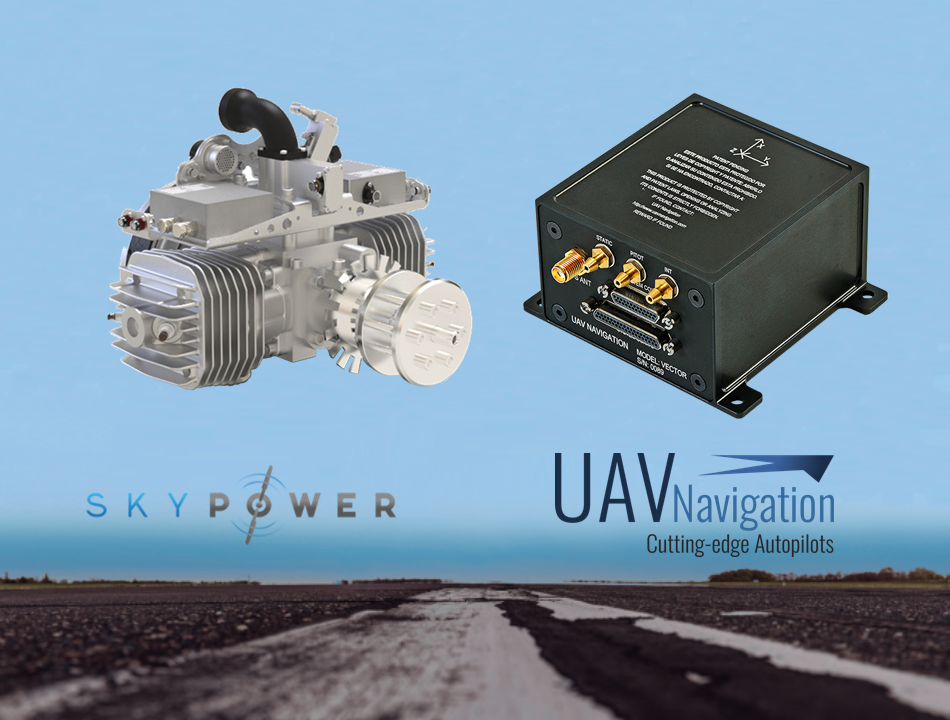Commercial UAV News has often spoken about the value of full end-to-end data processing services; they streamline potentially complicated workflows into a single end-user interface that anticipates the needs of the business. This eliminates the need to switch between multiple applications, which is not only costly but can add an additional level of complication with compatibility and maintaining data integrity. But a similar issue is faced on the hardware side of the industry with drone developers going to multiple suppliers to get various parts such as flight controllers, engines and so on. Similar to switching data from one platform to the next, trying to make disparate hardware fit together can cause inefficiencies and additional engineering challenges, which may not only take additional time and money to solve but could also reduce the performance of the final product.
Sky Power GmbH and UAV Navigation saw this bottleneck in the production workflow and joined together to develop a fully integrated drone propulsion system and flight controller. By enabling information to be sent via CAN bus from Sky Power’s ECU030 and ECU080 Engine Control Units to UAV Navigation’s VECTOR autopilot, they are working on streamlining the drone manufacturing process. We spoke with Karsten Schudt, Managing Director of Sky Power GmBH, and David Pinta, Marketing and Communications Manager at UAV Navigation to find out more.
“This is a plug and play integration,” stated Pinta. “We wanted to provide our customers with an easy integration process of all the systems that are required to make a drone platform fly. The flight controller is like the brain in the human body. With this integration between the engine and the autopilot, information is exchanged seamlessly between the engine, flight controller, and pilot. With this extra level of integration, we built algorithms and logistics to ensure flight safety, such as stall protection in case the engine fails. This integration also enables the autopilot to control the system’s energy output—adjusting it in real time for the best possible engine performance and acoustic footprint.”
Up until now, obtaining this level of integration between flight control and propulsion system has been challenging for drone manufacturing companies who have to purchase a lot of components to build their systems. By building their propulsion system to work seamlessly with UAV Navigation’s flight controller, they are reducing the number of components manufacturers have to integrate as well as the points of contact, which, in turn, reduces the time to market and cost.
“For example, usually manufacturers will have to figure out how to obtain the connection between the flight controller and the engine in order to start, fly, and command the aircraft. We’ve established the complete protocol, so that these systems can talk directly together,” explained Schudt. “Our customers no longer need to spend a lot of time and effort connecting the propulsion system and flight controller together, saving one or two months of integration time. It is difficult for most of our customers to build or design propulsion systems, which is not only the engine, it is also the starter generator, fuel injection system, muffler system, as well as the propeller—we know our engines best because we design and produce them. Now we can not only supply the complete propulsion system to the customer based on their needs, we can also add the navigation system, which is fully integrated.”
Sky Power is able to work with customers to build their engines to spec and are capable of doing everything from heavy lift to basic camera control for applications like inspections, drone delivery, mapping, and more. They are also designed to go into any platform such as fixed wing, VTOLs, helicopters, or multicopters, providing a solution for almost any drone manufacturer’s needs.
In the same way, UAV Navigation’s flight control solutions may be used in a wide range of professional unmanned platforms, including fixed wing, VTOL, helicopters and target drones. Its flight control system allows aircrafts to perform a complete autonomous operation even if there is no GNSS signal available.
For readers who are interested in learning more about this integration, both UAV Navigation’s and Sky Power GmbH’s websites have additional information.
















Comments